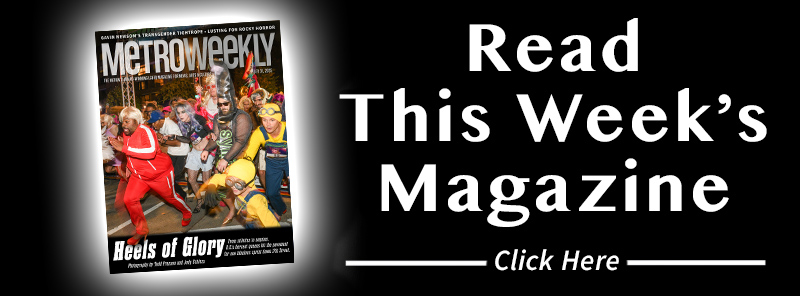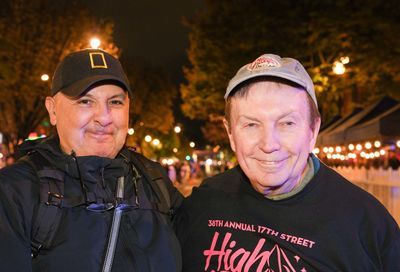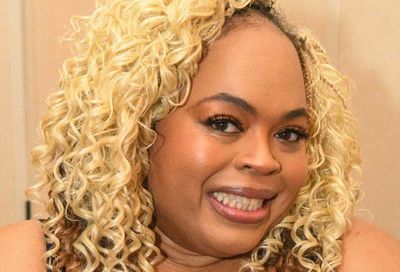Review: Justice League is an overstuffed turkey
Justice League pits a gaggle of superheroes against a foe that would demolish Earth. And no, it’s not Trump.

Bless Joss Whedon.
Where would the big screen comic book universe — mostly Marvel, but now DC, as well — be without his formidable gifts? It’s impossible not to notice the Buffy creator’s influence, mostly as a writer, but also as the man who stepped in to complete Justice League after director Zack Snyder dropped out for personal reasons. Because of Whedon, Justice League (★★ and 1/2) has more joie de vivre than its predecessors, particularly the bloated, cumbersome, and genuinely idiotic Batman v Superman.
Unlike the previous installments, the dialogue in Justice League is often laden with wit, which one assumes was a Whedon contribution. Case in point: Batman finally cracks a few jokes. And one of them is actually funny. Still, Whedon is merely a hired handyman here, applying a bit of fresh paint and caulk to a fixer-upper teetering on the brink of full collapse. And Justice League has plenty of problems, mostly resulting from Snyder’s stubbornly myopic super-serious, gloom-fortified take on DC’s most cherished properties. With the exception of Wonder Woman, which earlier this year lit up screens in a blaze of feminine-empowerment glory, the current DC approach to its iconic heroes has been lumbering, lethargic, and wholly dispiriting. They’re the antithesis of Marvel, which, for the most part, keeps getting it right, and isn’t afraid to try out new things.
Take Thor: Ragnarok. It feels whiz-bang fresh, thanks to a loosening of the formulaic noose by director Taika Waititi. Justice League — and all of DC — could use a bit of the Thor approach: it needs an injection of the frenzied and frenetic. At this point, however, it still feels misaligned.
The biggest problem with Justice League lies with cramming too much story into two hours. The narrative feels like an overstuffed turkey, and genuine character development is discarded in favor of quick-hit cardboard cutouts. So much has to happen in Justice League for things to advance that we barely have time to relish the thin, predictable storyline. Instead, it just passes before us, and we sit there, gazing at the screen like obedient drones, mindlessly munching on popcorn.
The Justice League narrative is propelled by the arrival of Steppenwolf, a horn-helmeted villain with skin desperately in need of a Clinique counter, who loudly and repeatedly proclaims himself “the ender of worlds.” Steppenwolf’s return (he’s tried this before, we learn, in a flashback involving the Amazons, Atlanteans, and — wait, what? Is that a Green Lantern?) is precipitated by humankind’s state of profound mourning over the death of Superman and, adjunctly, the intrepid, klutzy reporter Clark Kent. The world is in a state of utter chaos, uncertainty, and fear, which pretty much sums up how everyone who isn’t a white supremacist, an employee of Breitbart, or Roy Moore has been feeling since the election of Donald J. Trump. (The allegory to our modern-day malaise runs through Justice League like a flooded river.)
So it’s up to Batman (Ben Affleck) and Wonder Woman (Gal Gadot) to recruit a few other super-powered beings and forge an alliance. “We’re asking people who don’t know us to risk their lives,” WW says to the Bat, and all he can do is shrug. “Well, yes.”

The new, reluctant heroes, who, predictably, grow less reluctant as the plot lumbers forward, include the lightning-fast Flash (Ezra Miller), a deceased college quarterback brought back to life as an ever-changing alien robot named Cyborg (Ray Fisher), and the hard-drinking, grouchy Aquaman (Jason Momoa), who would seem more at home riding a bike with the Hell’s Angels than swimming with sardines. They eventually form an alliance — let’s call it the Justice League — to take on their all-powerful nemesis, but not before deciding they need one more superfriend in their employ.
Which raises the movie’s billion dollar question. Is Superman really dead, or is he just playing possum in that pine box, reading the latest Stephen King novel? So off they go for a late-night cemetery dig, which, as The Flash notes, feels like a Pet Semetary kind of moment. If he only knew.
Look, this isn’t a spoiler. The fact that Henry Cavill’s name is listed prominently in the opening credits should be a giveaway that the Man of Steel figures into the story in some capacity. Fans have put a lot of energy into speculating what kind of Superman might emerge from that pine box. Will he be good? Bad? Indifferent? Snyder and Whedon are clearly well aware of the chatter, and have enormous fun with the Superman question in the movie’s one truly great, genuinely gripping sequence — one that’s played with as much wit as alarming menace. It’s the only time in Justice League where the exhilaration of the moment takes hold, and it’s amazing.
Mostly, though, the film is business as usual for these heroes, who spend as much time striking meaningful poses as fighting the villain. And speaking of that villain, they might as well be fighting something out of Dreamworks Animation. Steppenwolf, boomingly voiced by Ciarán Hinds, resembles a badly rendered video game boss. And he’s not even the worst special effect in the movie. Honestly, for all the money poured into Justice League, the effects have a slapdash, unfinished quality. It’s possible all the talented special effects people were busy working on the eye-popping Thor.
Affleck is clearly growing tired of playing Batman; you can sense it in every second of his listless performance (though he’s still better at wearing the cowl than George Clooney). Gadot, by contrast, lights up every scene she’s in — the camera adores her, she adores the camera, and we all benefit from the mutual adoration. Fisher, eradicated by a “special effect costume” with only a small portion of his face showing, has a thankless role, though he gives it his all, and, as a result, Cyborg seems the most potentially interesting new character on offer — a standalone film would be welcome. Momoa’s Aquaman isn’t shirtless nearly enough, and his skills as an actor are limited to three expressions: angry, angry with furrowed brow, and angry with scowl. Sometimes Momoa combines all three and you just want to hand him an Oscar for trying so very, very hard.

The savior of Justice League is Miller, who brings just the right fizzy pop of nerdy, gee-whiz buoyancy to The Flash. Miller provides Justice League its lightness of being, and The Flash’s evolution to a full-on hero is the film’s most satisfying arc.
The movie ends with a post-credits scene that promises bigger, badder things to come — but, if I’m reading this right, on a slightly more human scale. That would be a nice respite from these planet-hungry super-entities bent on demolishing earth for no apparent reason other than to give the superheroes someone to beat against all odds. (Marvel is just as guilty of this.) So perhaps it is time to scale things back and let the characters and their mythologies ripen a bit. As Alfred (Jeremy Irons) sighs to Batman, “One misses the days when one’s biggest concern was exploding wind-up penguins.” Indeed.
Justice League is rated PG-13 for moderate violence. It opens Friday at area theaters. Visit Fandango.com.
Support Metro Weekly’s Journalism
These are challenging times for news organizations. And yet it’s crucial we stay active and provide vital resources and information to both our local readers and the world. So won’t you please take a moment and consider supporting Metro Weekly with a membership? For as little as $5 a month, you can help ensure Metro Weekly magazine and MetroWeekly.com remain free, viable resources as we provide the best, most diverse, culturally-resonant LGBTQ coverage in both the D.C. region and around the world. Memberships come with exclusive perks and discounts, your own personal digital delivery of each week’s magazine (and an archive), access to our Member's Lounge when it launches this fall, and exclusive members-only items like Metro Weekly Membership Mugs and Tote Bags! Check out all our membership levels here and please join us today!























You must be logged in to post a comment.